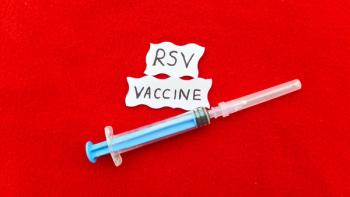
Social, Risk Networks Could Help Target Undiagnosed HIV Population
Testing the social networks of patients newly-diagnosed with HIV could reveal other cases of the infection.
Targeting HIV testing efforts among individuals in the social and risk networks of patients recently diagnosed with the virus may help reveal a higher number of cases of HIV, while costing less than other approaches, according to a new study published by the Journal of the International AIDS Society.
Early diagnosis and treatment initiation is crucial for preventing transmission and adverse events. Many countries have launched large-scale testing and outreach programs in hopes of diagnosing patients with HIV. In many instances, significant resources are spent on testing patients, with the number of patients who are HIV-negative dramatically outweighing new cases.
“Tracing social and risk networks has been found to help locate people recently infected with HIV, given that the virus is transmitted through sexual and injection risk networks,” said lead researcher Samuel R. Friedman, PhD. “In addition, since social norms and rumors about HIV testing and treatment are likely to spread through social networks, which overlap to considerable degree with risk networks, this also lets us zero in on groups who would usually be unlikely to get tested on their own.”
In the new study, the authors compared how well the Transmission Reduction Intervention Project (TRIP), integrated biobehavioral surveillance, and outreach testing approaches were able to identify undiagnosed patients. These programs were evaluated in Odessa, Ukraine, where an HIV epidemic associated with injection drug use started in the 1990s, according to the authors.
For TRIP, the authors conducted network-based recruiting, counseling, and testing between 2013 and 2016. They recruited patients who were potentially infected with HIV and whose risk networks could be evaluated.
Risk networks were classified as sexual partners, individuals the participants injected drugs with, individuals who were present when the participants were having sex or using drugs, and patients recruited from places where participants used injection drugs or located sexual partners, according to the authors.
TRIP focused on those recently infected and their risk networks, and patients with a longer-term HIV infection and their network. The authors noted that newly-infected patients are a critical target because they are likely to have a high viral load, lack of immune response, and a higher rate of risky behaviors.
The integrated biobehavioral surveillance method used respondent-driven sampling to recruit patients who inject drugs into testing, while the outreach testing project conducted testing of people who inject drugs at community outreach sites.
The authors discovered that recruiting the risk networks of HIV-positive patients led to a higher rate of undiagnosed positives compared with either approach, according to the study.
In total, TRIP tested 1252 patients, of whom 14.6% were HIV-positive; the integrated biobehavioral surveillance project tested 400 patients, of whom 5% were HIV-positive; and the outreach initiative tested 13936 patients, of whom 2.4% were HIV-positive, according to the study.
Within TRIP, the authors discovered that the networks of newly-infected patients contained a higher portion of undiagnosed patients with HIV compared with the networks of longer-term infected patients, at 16.3% and 12.2%, respectively.
Additionally, the authors found TRIP to be a very cost-effective method for diagnosing HIV. In 2013/2014, the cost per person diagnosed was $250 for TRIP, $387 for integrated biobehavioral surveillance, and $941 for outreach testing, according to the study.
Due to the study results, the authors recommend that features of TRIP, including prioritizing networks of newly-diagnosed patients, be integrated into
“The superiority of TRIP as a way to recruit undiagnosed positives probably stems from its design,” Dr Friedman said. “TRIP zeroes in on the social networks most likely to be infected rather than attempting to use ‘weak ties’ to recruit people who inject drugs who are socially and geographically distant from the ‘seeds.’”
Newsletter
Stay informed on drug updates, treatment guidelines, and pharmacy practice trends—subscribe to Pharmacy Times for weekly clinical insights.




















































































































































































































